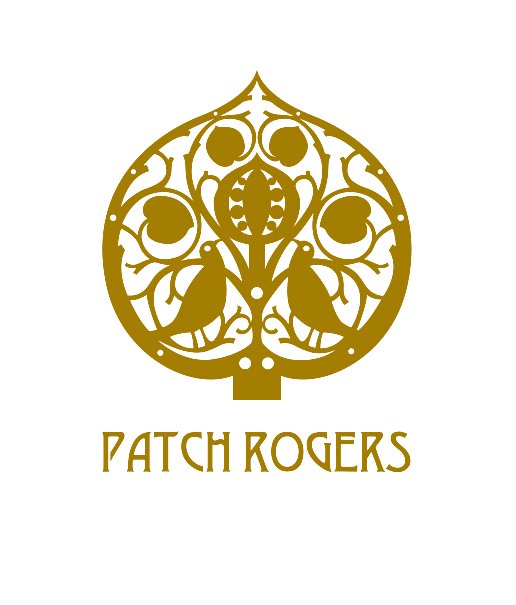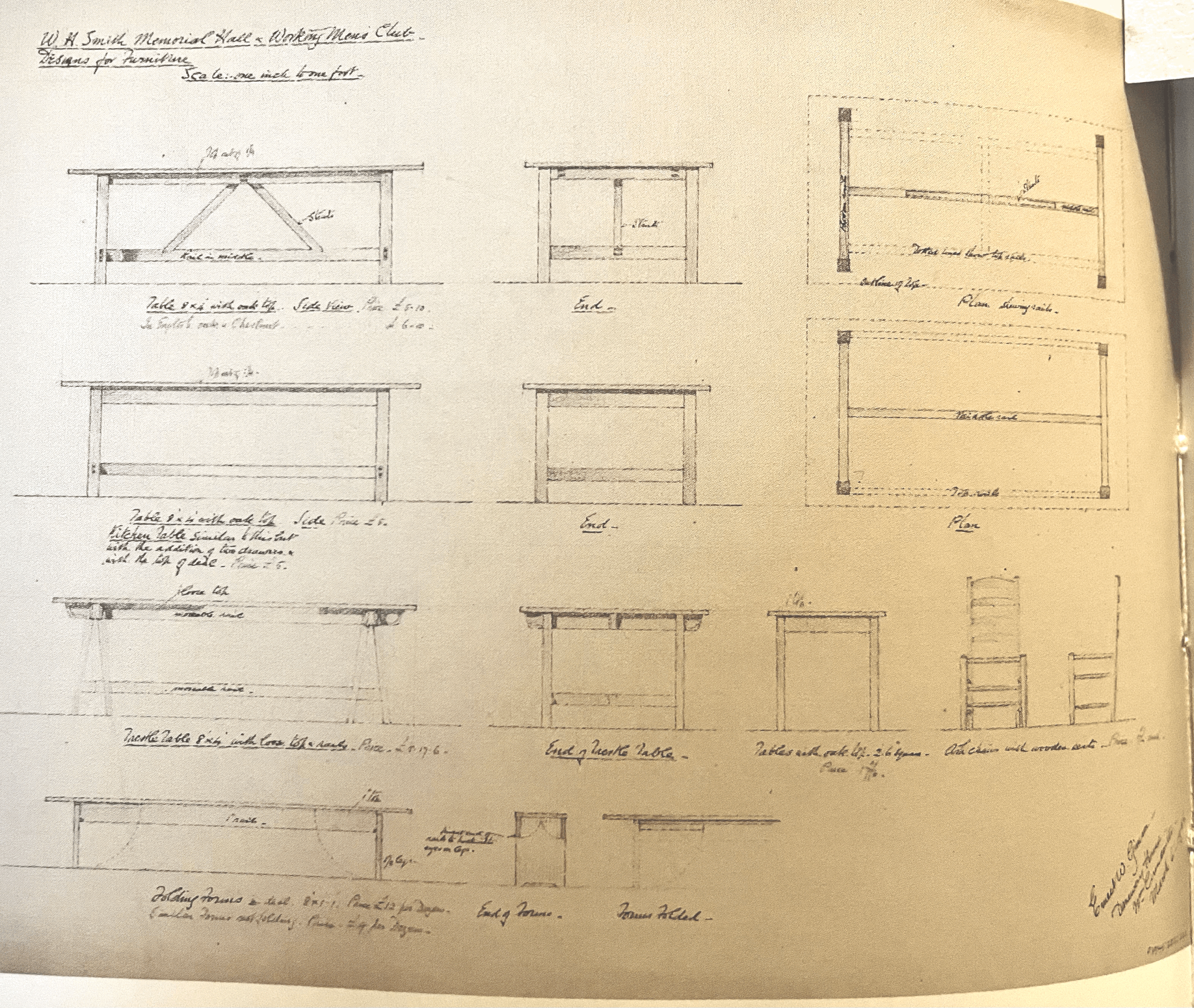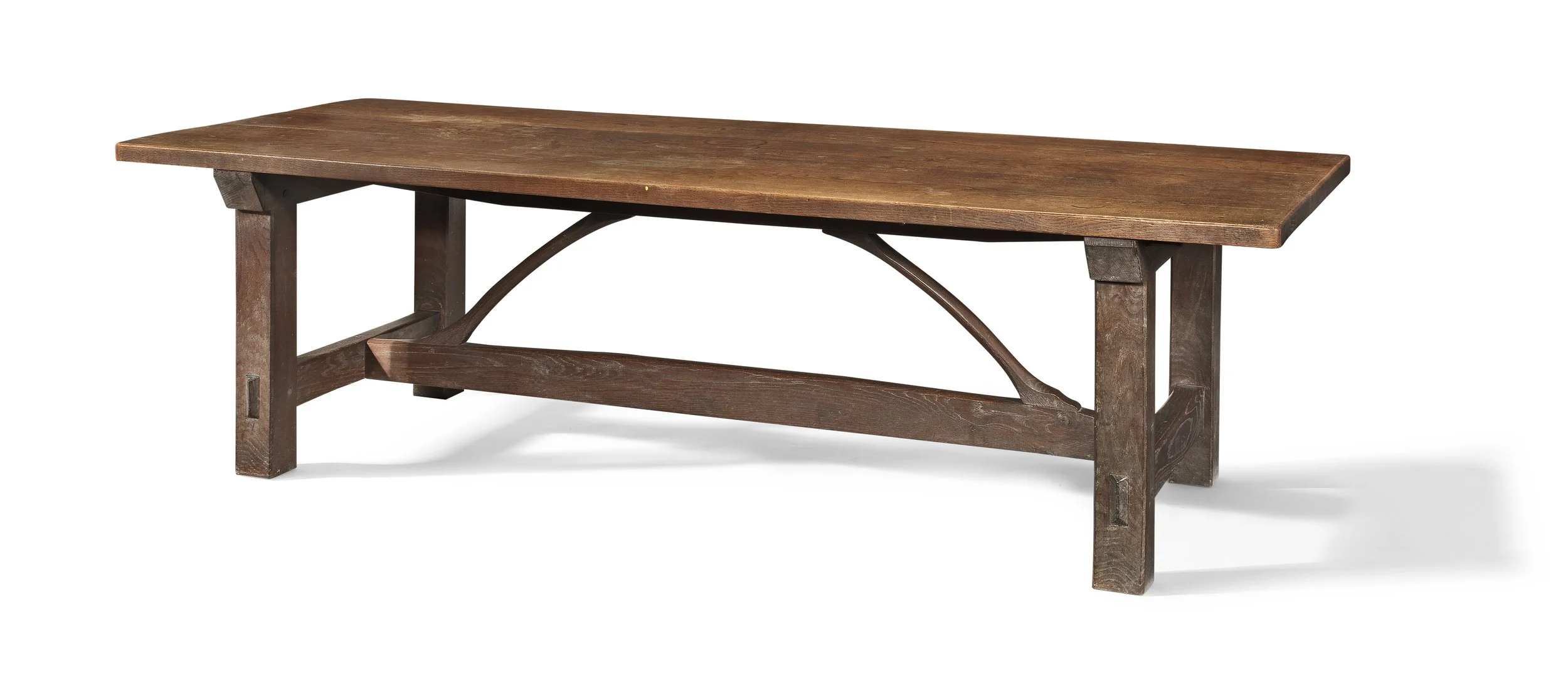F312 ARTS & CRAFTS COTSWOLD SCHOOL OAK REFECTORY TABLE
F312 ARTS & CRAFTS COTSWOLD SCHOOL OAK REFECTORY TABLE
Early Arts & Crafts Wishbone Cotswold School refectory dining table in oak
3 plank top
Square through-tenon jointed legs with Wishbone bracing
Maker Sidney Barnsley
Designer Ernest Gimson
Circa 1894-1900
Pinbury Workshop
Height 75cm Length 241cm Width 100cm
POA
PROVENANCE : Powell family, then by decent to previous owner;
Purchased by Patch Rogers, Bonhams London June 2023.
Bonhams catalogue entry: “Made by Malcolm as a wedding present for his brother Oswald Powell (Co-founder of Bedales School) on the occasion of his marriage to Winnifred Cobb in 1894.’
It is known that Malcolm Powell worked with Sidney Barnsley in his workshops at Sapperton, around 1902/04 and made furniture to his own designs, these designs were often cruder than that of Gimson and the Barnsley’s. The wishbone/hayrake design table is known to be a Gimson design, the simplicity of this table fits with the early designs at Pinbury, this would lead us to believe it is by Sidney’s hand and not by Malcolm Powell. The early period at Pinbury was very much an experimental time for Gimson and the Barnsley’s where Sidney honed his craft as a furniture maker. The attribution to Malcolm as maker by the family may well of been misunderstood through time, and could well be that Malcolm commissioned Sidney to make the table for his brother Oswald.
The Wishbone and Hayrake table progressed in design terms over a period of about 20 years between 1895-1915 becoming more sophisticated as Gimson refined the design alongside the very exacting cabinet making skills of Peter Waals. But it was the early period of Pinbury where the style was formed. Sidney and Ernest Barnsley were influenced by the wheelwrights and farming tools still in use in the Cotswolds. The designs tended to be very functional and primitive in the early period, a woodcut by Fred Griggs in “Ernest Gimson His Life And Works” titled “Gimson’s Living Room Pinbury” shows a simple table with wishbone stretchers around 1895. Sidney Barnsley makes a wishbone table for Stoneywell Cottage 1898.
In the same sale at Bonhams from the same family connection an early dresser 1900 by Sidney Barnsley sat a long side this table as well as 2 other dated pieces 1902/1903 by Malcolm Powell.
1885-1888 Sidney works at the offices of Richard Norman Shaw
1890 Sidney takes lodgings with Gimson, joins Kenton and Company
1893 Gimson, Sidney and Ernest Barnsley leave London for Gloucestershire.
1894 Ernest Gimson, Sidney and Ernest Barnsley take a lease at Pinbury park. Sidney worked at the bench designing and making his own designs and worked closely with Gimson and his brother Ernest Barnsley, Gimson struggles to formulate a furniture style making a bobbin chair and some plaster designs.
1896 Sidney Exhibits at The Arts and Crafts Exhibition
1901 Peter Van Der Waals joins the workshop at Cirencester
1902 Gimson and Ernest Barnsley establish the Daneway Workshops
Malcolm Powell joined Sidney Barnsley 1903 -1904
“It was Sidney Barnsley, in particular, who extended this knowledge through his dedicated experimentation in the field of furniture design at Pinbury, laying the foundations, both technically and stylistically, for the later work of all three men. Sidney Barnsley’s contribution at this stage of there careers, and also within the broader framework of the Arts and Crafts Movement, was a unique one, commented upon by Paul Thompson in his book on William Morris:”
“The ultimate logic of the Arts and Crafts theory that craftsmen should work on their own designs was scarcely recognised before the 1890’s. partly because all the leaders of the movement were architects. Even then, Sidney Barnsley was the only important furniture designer who executed all his own work.”
ref; Mary Greensted Gimson and the Barnsley’s page 83,85











